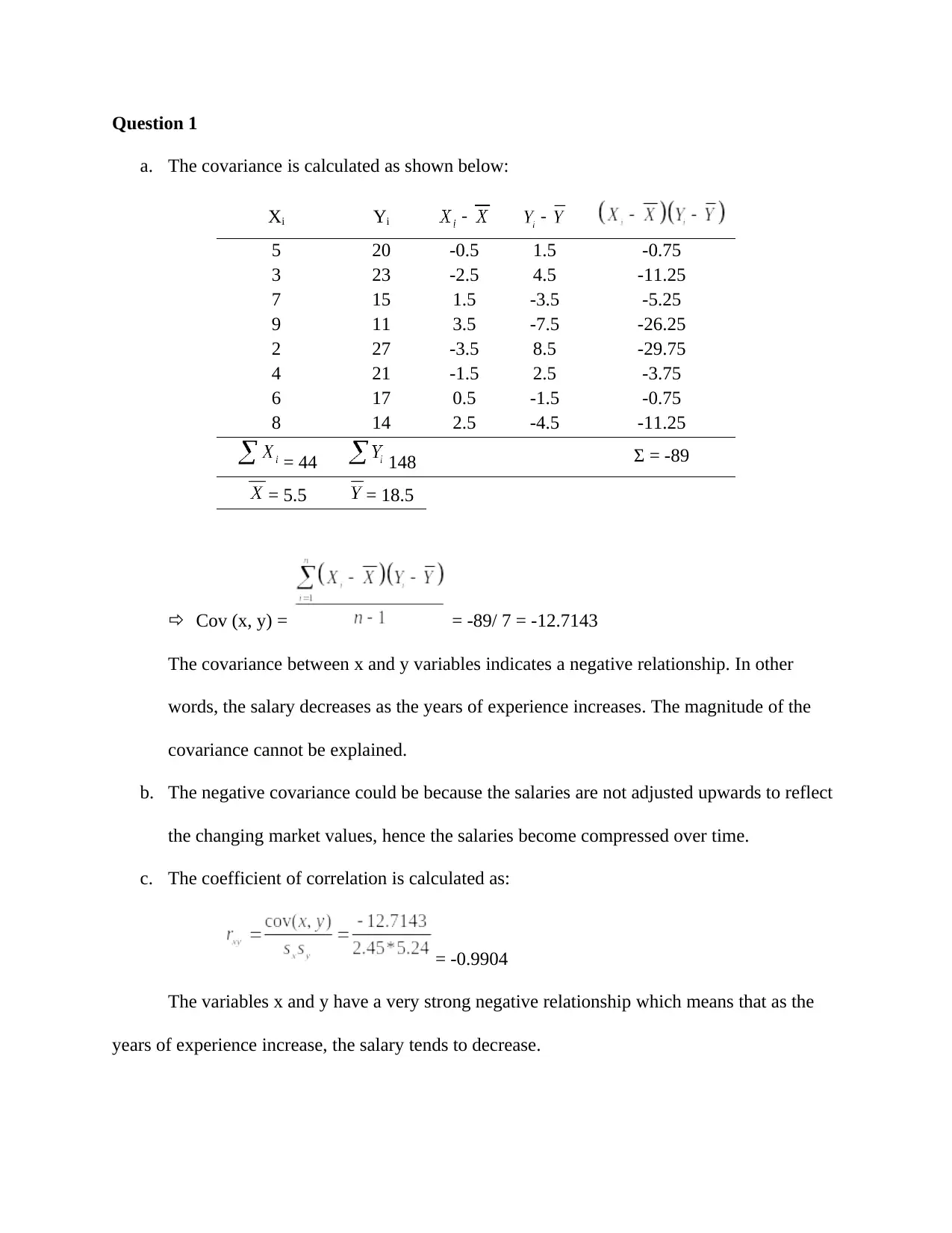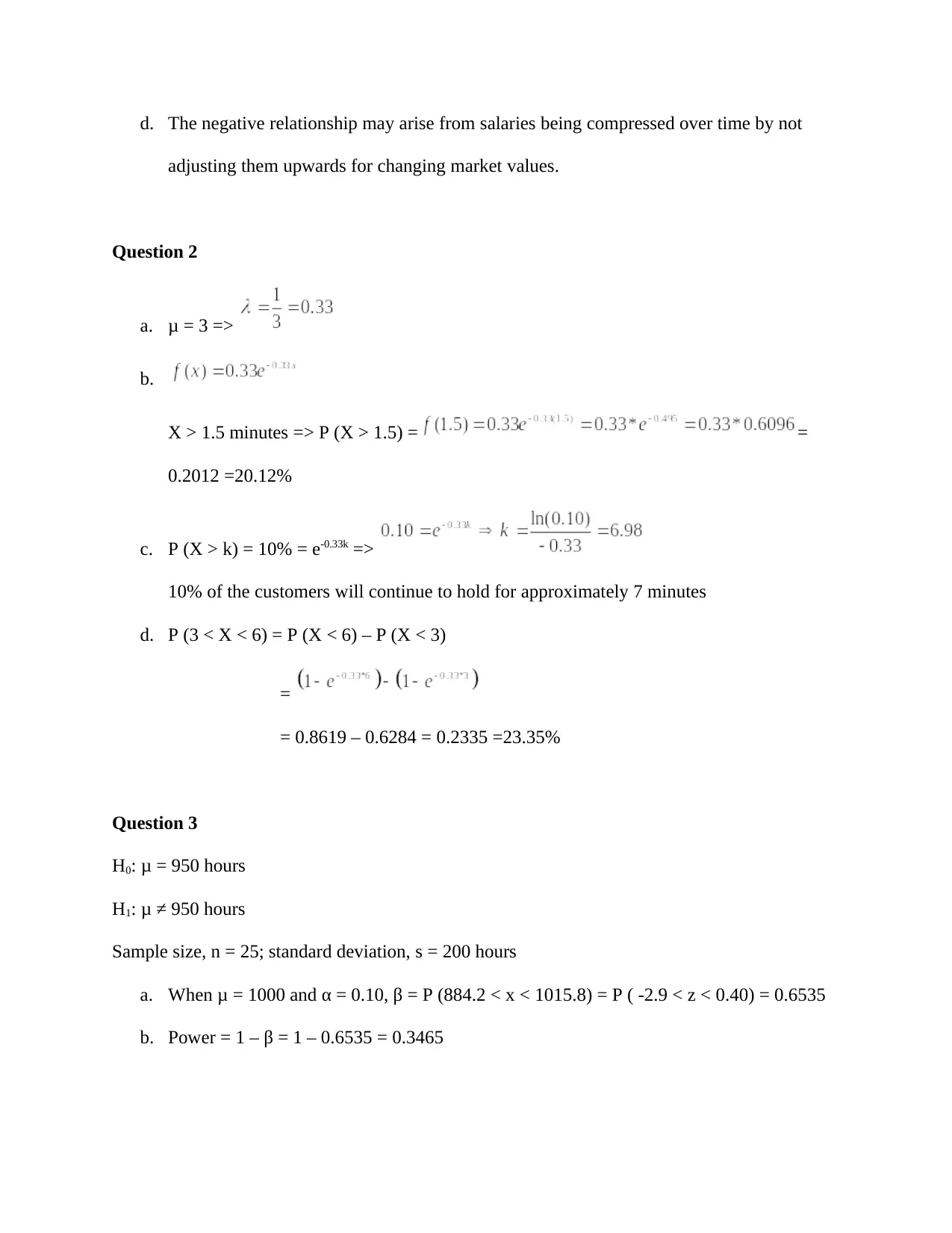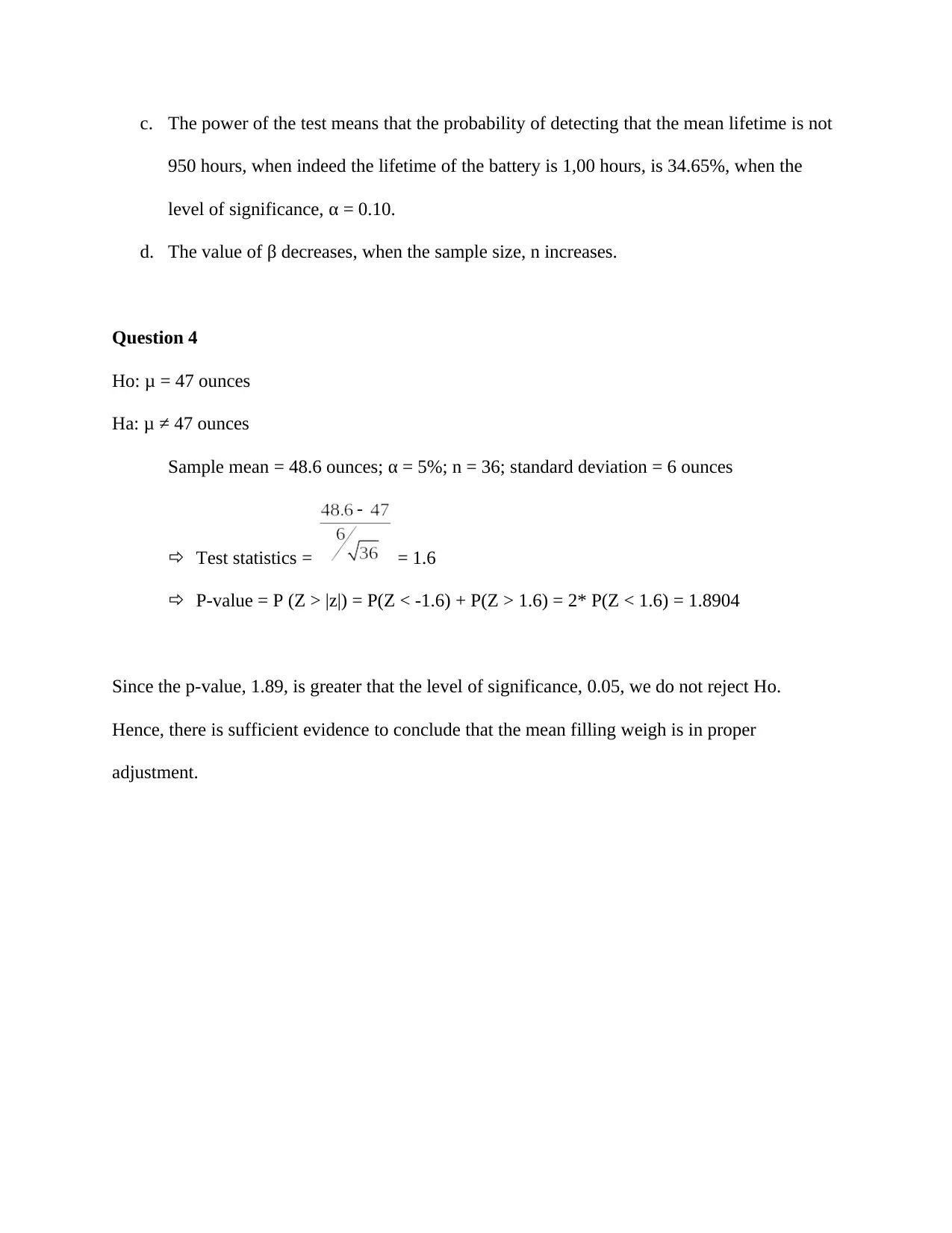Statistics and Probability Homework Assignment Solution
VerifiedAdded on 2023/06/03
|3
|534
|88
Homework Assignment
AI Summary
This document presents a detailed solution to a statistics homework assignment, addressing questions related to covariance, correlation, probability distributions, and hypothesis testing. The solution begins with the calculation of covariance and correlation, interpreting the relationship between variables and discussing potential reasons for negative correlation. It then delves into probability calculations using exponential distributions, determining probabilities for customer waiting times. Finally, the assignment explores hypothesis testing, evaluating the power of a test and conducting a hypothesis test to determine if a mean filling weight is in proper adjustment. The solution provides step-by-step calculations and interpretations, offering a comprehensive understanding of the statistical concepts involved.
1 out of 3






![[object Object]](/_next/static/media/star-bottom.7253800d.svg)